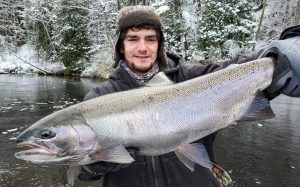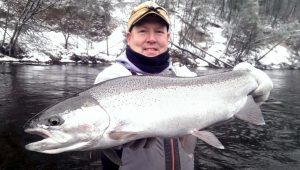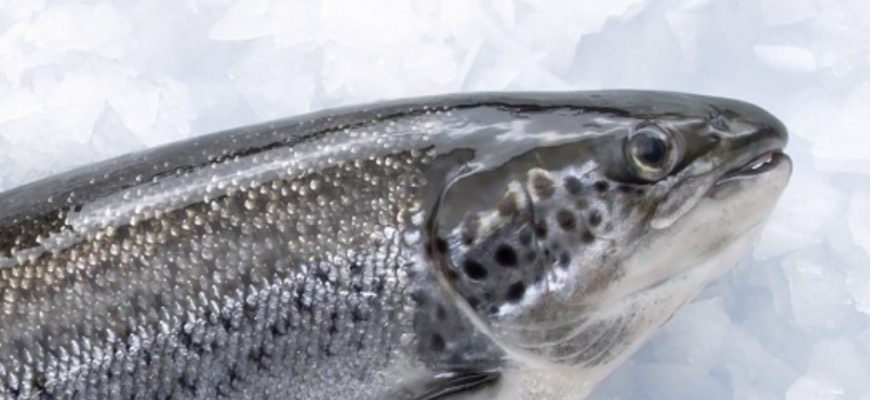Winter steelhead fishing is a challenging yet rewarding pursuit for many anglers. These elusive fish are known for their hard-fighting nature and are considered by many to be one of the most prized catches in freshwater fishing. In this guide, we will explore the biology and behavior of steelhead, the gear and tackle needed to catch them, the best locations to fish for them, and techniques and strategies to increase your chances of success. Whether you are a seasoned pro or a beginner, this guide will help you understand the intricacies of winter steelhead fishing.
- Understanding Steelhead: Biology and Behavior
- Gear and Tackle for Winter Steelhead Fishing
- Best Locations for Winter Steelhead Fishing
- Techniques and Strategies for Catching Winter Steelhead
- Fly Fishing for Winter Steelhead
- Bait Fishing for Winter Steelhead
- Steelhead Fishing with Spinning Gear
- Understanding River Conditions and Weather for Winter Steelhead Fishing
- Safety Tips for Winter Steelhead Fishing
- Cleaning and Cooking Winter Steelhead
- Why Winter Steelhead Fishing is Worth the Effort
Understanding Steelhead: Biology and Behavior
Steelhead are anadromous fish that are closely related to rainbow trout. They spend most of their lives in the ocean but return to freshwater rivers and streams to spawn. Steelhead have a silver or steel-blue coloration, with black speckles along their back and fins. They are known for their powerful, acrobatic jumps when hooked and are often considered the most challenging game fish to catch.
Steelhead prefer cold water temperatures and are typically found in rivers and streams with fast-flowing currents and deep pools. They are opportunistic feeders, eating a variety of prey including insects, small fish, and crustaceans. Understanding their behavior and habitat is key to catching these elusive fish.
Gear and Tackle for Winter Steelhead Fishing
To catch winter steelhead, you’ll need the right gear and tackle. A 9-10 foot rod with a fast action and medium-heavy power is recommended, along with a reel with a strong drag system and a high line capacity. Use a braided fishing line with a 20-30 pound test for maximum strength and sensitivity. You’ll also need a selection of hooks, sinkers, and lures, including jigs, soft plastics, and spoons.
Best Locations for Winter Steelhead Fishing
Winter steelhead can be found in many rivers and streams throughout the Pacific Northwest, including the Columbia River, the Deschutes River, and the Rogue River. Look for areas with deep pools and fast-flowing currents, as steelhead prefer to hold in these areas. Pay attention to water temperature and clarity, as steelhead are more active in cooler, clearer water.

Techniques and Strategies for Catching Winter Steelhead
There are several techniques and strategies for catching winter steelhead, including fly fishing, bait fishing, and spinning gear. Fly fishing involves presenting a fly to the fish using a variety of casting techniques. Bait fishing involves using bait such as eggs or worms to entice the fish. Spinning gear involves using lures such as jigs or spoons to mimic the movement of prey.
Fly Fishing for Winter Steelhead
Fly fishing for winter steelhead can be a challenging yet rewarding pursuit. Use a 9-10 foot rod with a fast action and a weight-forward floating line. Choose flies that mimic the prey that steelhead are feeding on, such as stoneflies, eggs, or leeches. Practice casting techniques such as the double spey or the snap-T cast to present the fly to the fish.
Bait Fishing for Winter Steelhead
Bait fishing for winter steelhead involves using bait such as eggs or worms to entice the fish. Use a 9-10 foot rod with a medium-heavy power and a sensitive tip. Use a sliding sinker rig to keep the bait near the bottom, and vary the depth until you find where the fish are holding. Keep the bait moving slightly to attract the attention of the fish.
Steelhead Fishing with Spinning Gear
Steelhead fishing with spinning gear involves using lures such as jigs or spoons to mimic the movement of prey. Use a 9-10 foot rod with a fast action and a reel with a smooth drag system for the best results. A braided line with a 10-15 pound test is recommended for its sensitivity and strength.
When choosing lures, consider the water clarity and the size and color of the prey in the area. Brightly colored lures such as pink or chartreuse are often effective in murky water, while more natural colors such as silver or gold work well in clear water. Be sure to vary the speed and depth of your retrieve to find what the fish are responding to.
Another important factor to consider when using spinning gear is the weight of your lure. Use a weight that is appropriate for the current and depth of the water you are fishing in. If the water is shallow and slow-moving, a lighter weight will allow your lure to float naturally. In deeper, faster-moving water, a heavier weight will help your lure reach the desired depth and stay in the strike zone.
As with other fishing techniques, pay attention to the behavior of the fish and adjust your technique accordingly. If you notice that the fish are actively feeding near the surface, switch to a topwater lure or adjust your retrieve to keep your lure near the surface.

Understanding River Conditions and Weather for Winter Steelhead Fishing
River conditions and weather can have a significant impact on the success of your winter steelhead fishing trip. Pay attention to the water levels and flow rate, as these can affect the behavior and feeding patterns of the fish.
In general, steelhead are more active and aggressive when the water is rising and slightly murky. This is because rising water levels often dislodge insects and other prey from the river bottom, creating an easy meal for the fish. In contrast, steelhead may be less active and more wary when the water is clear and low.
The weather can also affect steelhead behavior. Overcast or slightly rainy days are often the best for fishing, as steelhead are more likely to be actively feeding and less wary of potential predators. On bright, sunny days, steelhead may retreat to deeper water or under cover to avoid detection.
Safety Tips for Winter Steelhead Fishing
Winter steelhead fishing can be a thrilling and rewarding experience, but it is important to prioritize safety at all times. Here are a few safety tips to keep in mind:
Always wear a personal flotation device (PFD) when fishing in or near water. This is especially important when fishing from a boat or wading in fast-moving water.
Dress appropriately for the weather and water conditions. Wear layers to stay warm and dry, and consider wearing waders or waterproof boots if you will be wading in the water.
Be aware of your surroundings and potential hazards, such as slippery rocks or fast-moving currents.
Let someone know where you will be fishing and when you expect to return.
Avoid fishing alone whenever possible.
Cleaning and Cooking Winter Steelhead
Once you’ve caught a winter steelhead, it’s important to clean and cook it properly to ensure the best flavor and texture. Start by gutting and scaling the fish, then fillet it and remove the skin. Steelhead have a mild, delicate flavor that pairs well with a variety of seasonings and cooking methods.
One popular way to cook steelhead is to grill or bake it with a simple marinade of olive oil, lemon juice, and herbs. Another option is to pan-sear the fillets with a mixture of butter, garlic, and herbs for a crispy, flavorful crust. Steelhead also works well in soups and stews, as its mild flavor blends well with other ingredients.
Why Winter Steelhead Fishing is Worth the Effort
Winter steelhead fishing requires patience, skill, and persistence, but the reward of catching these hard-fighting fish is well worth the effort. Whether you prefer fly fishing, bait fishing, or spinning gear, the thrill of hooking and battling a steelhead is a unique experience that many anglers crave. Not only is it a challenging and exciting sport, but it also allows you to appreciate the beauty of the winter landscape and the serenity of the riverside.
Winter steelhead fishing is also an opportunity to connect with nature and to learn about the ecosystem that supports these fish. Steelhead are a vital component of the Pacific Northwest’s economy, culture, and ecology. Understanding their biology and behavior can help us conserve and protect their populations for future generations to enjoy.
In addition, winter steelhead fishing can be a social activity that brings friends and family together. Sharing the experience of catching a big steelhead can create lasting memories and strengthen relationships. It’s also a chance to connect with other anglers and to learn from their techniques and strategies.
Finally, winter steelhead fishing is a way to escape from the hustle and bustle of daily life and to recharge your batteries. Spending time in nature, away from the distractions of technology and urban life, can be a rejuvenating experience for both your body and your mind.
In conclusion, winter steelhead fishing is a challenging, rewarding, and fulfilling activity that is worth the effort. Whether you are a seasoned angler or a beginner, the thrill of catching a big steelhead is an experience that you will never forget. So grab your gear, bundle up, and head out to the river to experience the magic of winter steelhead fishing.
